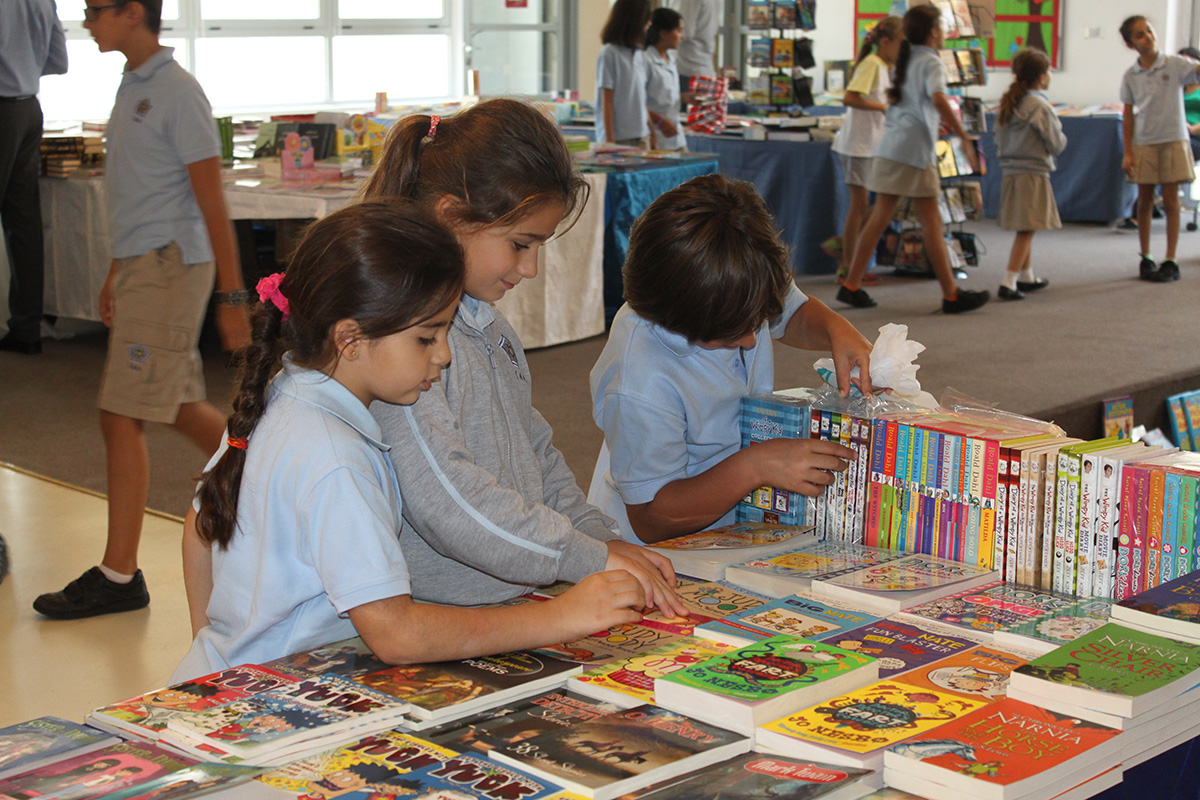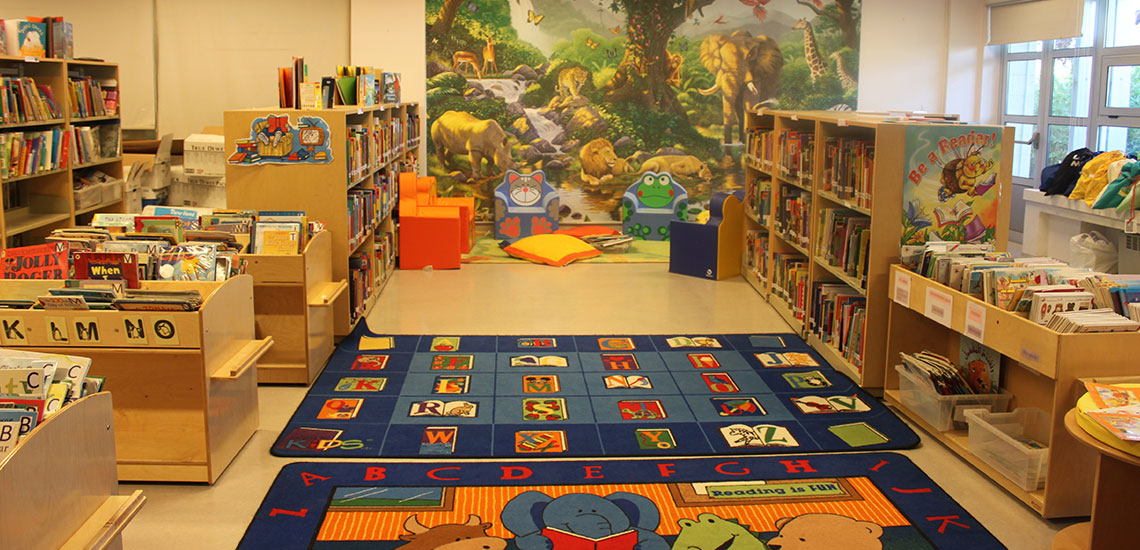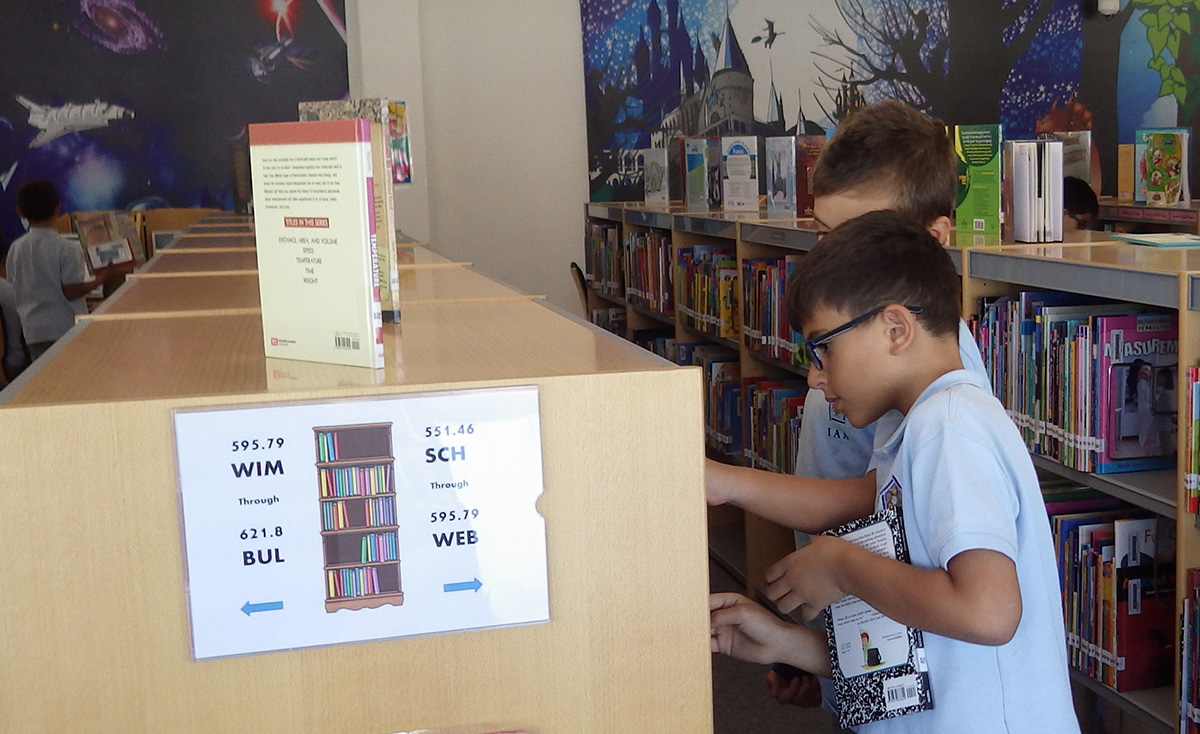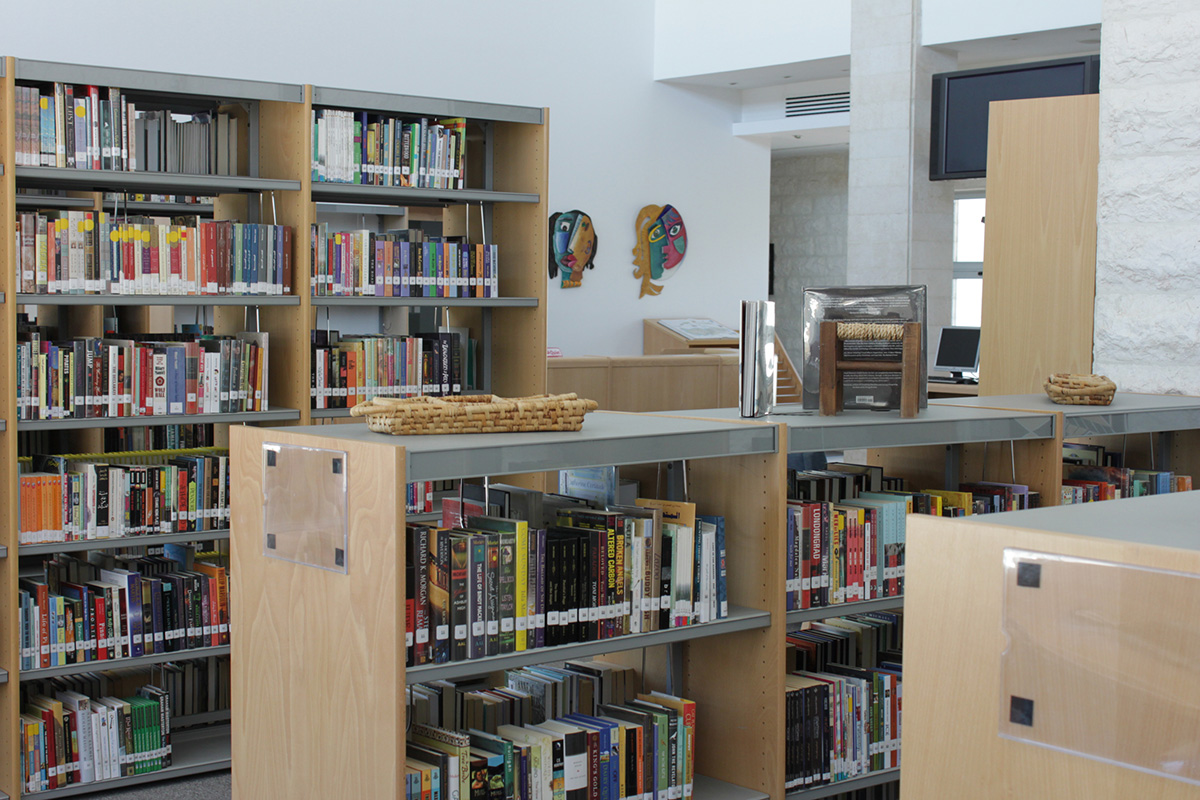

The International Academy - Amman has one the largest Resource Centers in Jordan. These innovative centers of creativity and research consist of three fully-staffed libraries and a Media Lab. Each library employs a Teacher-Librarian, Arabic Language Specialist, and Library Assistant. The combined resources comprise over 90,000 print resources via Destiny Discover, our online library catalog, thousands of online sources through Universal Search, over one thousand online eBooks, and subscriptions to Britannica School, PowerKnowledge LifeScience, Gale and JSTOR. All three libraries are accessible 24/7 through the IAA library homepage: www.library.iaa.edu.jo. Physical facilities are open on school days from 7:30am - 3:30pm.
Students come to the KG and Primary library for weekly lessons. The libraries at IAA follow the Informatics Curriculum. This consists of library skills, research skills, use of technology, information literacy and digital citizenship. All our libraries use Destiny Discover, an online integrated library system where students can search and access library books, eBooks and online resources.The libraries are subscribed to Britannica School, a citable, online learning resource trusted by teachers and students. It uses safe, up-to-date, and age-appropriate information resources for both primary and secondary students. Here they’ll find leveled encyclopedia articles, multimedia, primary sources, and other learning resources that support student research and reinforce curriculum standards.
The Libraries Makerspace Programme is a monthly initiative to bring students, parents and library staff together for an hour of creative collaboration to design and create a variety of technical and artistic projects, including 3D printing projects and quilling.
Librarians also host book clubs and seminars for students and parents on topics including how to access our eBook subscriptions and our online databases so that they know how to use library resources to the fullest potential and can encourage their children to take advantage of our wonderful resources.
The Libraries support the Pillars of IAA and Mission of IAA by fulfilling our Duty to collaborate with staff and support student learning. We encourage Cultural Heritage in our wonderful collection of Arabic and Jordanian resources. We encourage Acceptance by giving students spaces to work together, share new ideas and diverse opinions. We offer a framework for Leadership by representing freedom of expression and intellectual growth for all.



